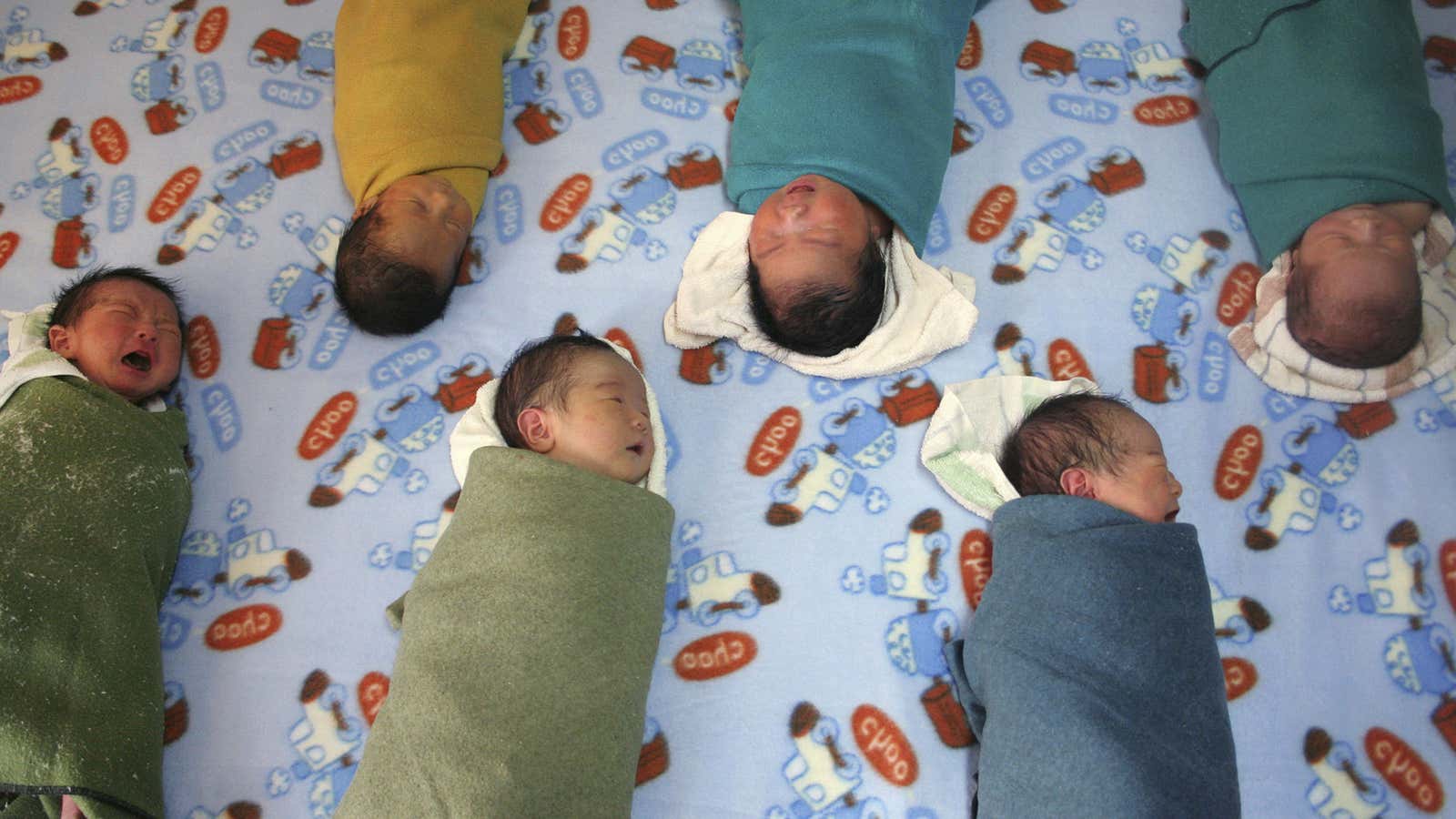From the moment we enter the world, we owe so much to our mothers. In addition to our lives, our mothers bequeath to us millions of other tiny life forms during birth.
Babies that are born vaginally are covered in microbes that live in their mother’s birth canals. These organisms are our starter-kit to developing our microbiome, the community of bacteria, fungi, and other microscopic entities that live all over us. Our microbiomes are thought to be responsible for breaking down certain foods, developing our immune systems, and even regulating our weight.
When a baby is born via C-section, she receives more skin microbes, but not those from her mother’s vagina. Researchers have found links between C-sections and babies (paywall) who have have allergies, asthma, and other immune diseases, probably due to their lack of certain microbial communities other babies receive from the birth canal.
Researchers from New York University and the Icahn School of Medicine have found a way to give babies born via C-section a dose of their mom’s birth canal microbes. They published (paywall) their work in Nature Medicine.
“Since we know that C-section is associated with some immune and metabolic conditions, and that C-section infants have a very different microbiome to vaginally delivered babies, our hypothesis and hope is that by restoring the microbes we can lower the risk for those diseases,” Jose Clemente, a microbiologist at the Icahn School of Medicine and co-author of study told Quartz in an email.
Clemente and his colleagues had to first prove they could perform a ”vaginal microbial transfer.” They conducted a small study on just 18 mothers and newborns to see if a mother’s vaginal microbes could be given to her baby outside of the typical birthing context. Seven of the babies were born vaginally, and 11 of the babies were delivered through C-section. Four of the babies delivered by C-section were swabbed with gauze that had been soaked in their mother’s birth canal fluid.
For the next 30 days, researchers took over 1,500 samples of microbes from mothers and babies. They found that in the babies that were born vaginally or otherwise received vaginal microbes, there were similar populations of certain types of gut microbes. It’s not really clear what kinds of long-term benefits these types of bacteria have for babies, but they’re not harmful, and may replace potentially harmful microbes, says Clemente. They may also be associated with anti-inflammatory effects. Babies who were born via C-section without any addition intervention didn’t have the same kinds of bacteria.
Babies delivered by C-section aren’t necessarily less-healthy in the long run; our microbiomes develop over time, and are shaped by the company we keep and the food we eat. Currently, estimates show that only about 15% of women and their babies need C-sections for health reasons. “But most Western countries have rates above 30%,” Maria G. Dominguez, a clinician-microbiologist at New York University and co-author of the study, said in a statement. As more women elect to have C-sections, it’s important to understand the consequences of the microbes that are transferred—or not—along the way.
Of course, not all microbes are good: Clemente stressed that this experiment was done in a controlled setting in a hospital, where doctors could ensure that mothers had only healthy populations of microbes to pass along to their babies.
Given the small size of the study, researchers were mainly hoping to show that they’re able to partially recreate a vaginal microbiome in babies born with a C-section—at least in the short-term. “Is this beneficial for the baby? We still don’t know, but we hope to address that question in future studies based on what we have learned from this one,” says Clemente.
